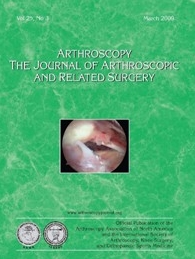
SHOULDER & ELBOW
Partial-thickness articular-sided rotator cuff repairs provide similar outcomes
This report has been verified
by one or more authors of the
original publication.
Arthroscopy. 2012 Jan;28(1):25-33. Epub 2011 Oct 14
48 patients with partial-thickness articular-sided rotator cuff tears greater than 50% of the tendon were randomized either to repair using an arthroscopic transtendon repair technique or to an arthroscopic repair following conversion to a full-thickness cuff tear. This study aimed to compare the clinical outcomes between these repair techniques. Early postoperative results at 3 months demonstrated that repair following conversion to a full tear provided greater reductions in pain and improvements in functional scores. These results were not maintained at later follow-ups, with both techniques providing satisfactory results.
Unlock the full ACE Report
You have access to {0} free articles per month.Click below to unlock and view this {1}
Unlock NowCritical appraisals of the latest, high-impact randomized controlled trials and systematic reviews in orthopaedics
Access to OrthoEvidence podcast content, including collaborations with the Journal of Bone and Joint Surgery, interviews with internationally recognized surgeons, and roundtable discussions on orthopaedic news and topics
Subscription to The Pulse, a twice-weekly evidence-based newsletter designed to help you make better clinical decisions
Exclusive access to original content articles, including in-house systematic reviews, and articles on health research methods and hot orthopaedic topics
Or upgrade today and gain access to all OrthoEvidence content for just $1.99 per week.
Already have an account? Log in


Subscribe to "The Pulse"
Evidence-Based Orthopaedics direct to your inbox.
{0} of {1} free articles
Become an OrthoEvidence Premium Member. Expand your perspective with high-quality evidence.
Upgrade Now













































































